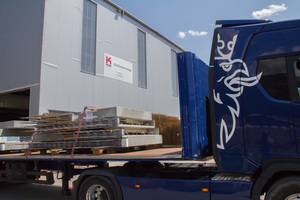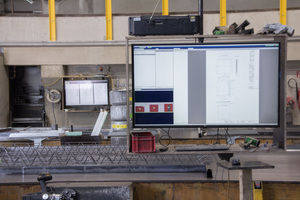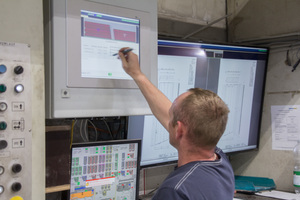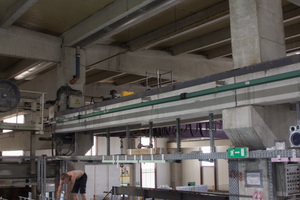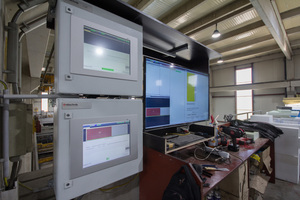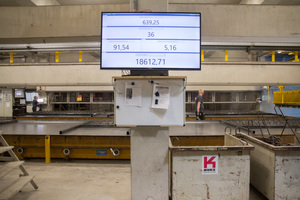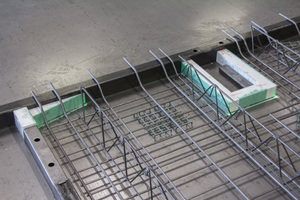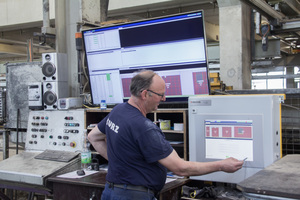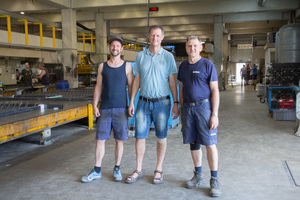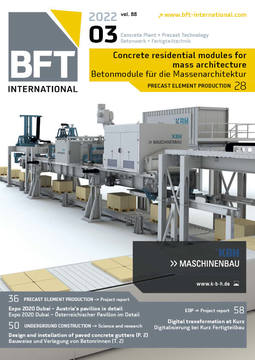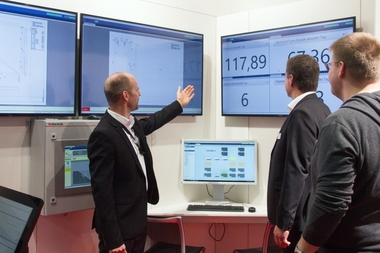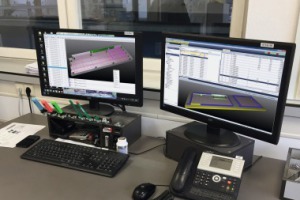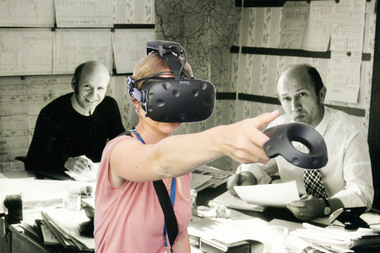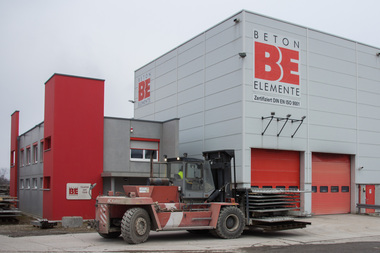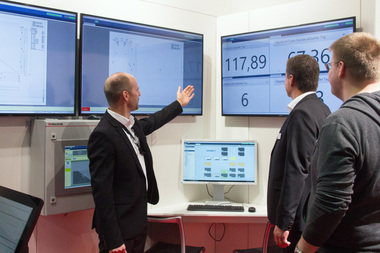Digital transformation at Kurz Fertigteilbau paves the way to paperless production
Austrian precast producer Kurz partnered with Unitechnik, the automation specialist, to upgrade its process control systems, thus paving the way to paperless production.
Kurz Fertigteilbau Ges. m.b.H operates its headquarters in Langkampfen near Kufstein, Austria, and is a member of Bodner Group, one of the leading construction companies in Austria. The business has a long-standing tradition and has been producing high-quality semi-precast elements, structural precast components, façade panels and precast stairs for as long as 47 years. At Plant 3 in Langkampfen, precast floor slabs, double walls and thermal walls are manufactured, with an average output of 100 m² of slabs and double walls per hour. Unitechnik Systems supplied the new process control systems as well as the UniCAM.10 master computer via which the automated carousel line is operated.
Going digital while keeping the plant fully operational
Kurz had previously used paper drawings on the shop floor. Departmental head Gerd Neus considered this way of working unsatisfactory: “Shop-floor staff received the element data on printed sheets that were attached to the pallet. The quality of these printouts varied greatly so that they were not always easy to read. At the end of the day, a huge pile of dirty paper ended up in the control room and was then filed in folders as a precautionary measure.”
Aiming to eliminate non-transparent and labor-intensive processes, Kurz launched an initiative to embark on a digital transformation process. In this context, Unitechnik was contracted with the extension of the UniCAM.10 control system to include large screens, touch panels and cameras – a big move towards paperless production. Unitechnik carried out all the work while the plant remained fully operational so that there was no interference with production.
Paperless production using commercially available televisions
Dirty paper drawings are a thing of the past. Nowadays, large screens mounted at each station display the elements of the current pallet. When the pallet moves to any of the workstations, the 55-inch monitor will automatically display the CAD drawings of the elements to be manufactured. A total of eight commercially available LED televisions were mounted along the carousel line and connected to the master computer.
As an alternative to the CAD drawings, the screens can also display any views of the UniCAM.10 control system. At the lifting station, for example, it appears useful to show the retrieval queue on the screen, while the large monitor mounted in the entrance area of the building makes key performance indicators visible to the workforce so that they are aware of what is going on in production at all times. This approach strengthens the team spirit among employees since each of them feels responsible for the entire process.
People in the focus
Kurz consistently focuses on the needs of its workforce. For example, departmental head Gerd Neus favors the basic principle that materials and information are brought to the employees at their workstations: “They shouldn’t have to walk through the entire plant to gather the materials.” In addition, the processes implemented in the plant do not originate from a top-down management approach. Rather, they result from the input of shop-floor staff, which ensures that they are widely welcomed and accepted in the implementation phase. To name but one example, team members jointly conceived a number of different mobile racks on which electrical boxes, magnets or stirrups can be arranged properly. For each pallet, materials are collected in the production planning area and made available at the respective workstation.
Documentation is half the job
Photographic documentation is part of a sophisticated quality management system. The ceiling above the concreting and insulating stations is equipped with cameras that take high-resolution pictures of the pallets. The cameras are linked to touch screens mounted near the workstations. Operatives use a superimposed checklist to confirm that all work steps have been carried out properly and that the parts indicated on the drawing are on the pallet. They can also enter free text in a comment field, such as a note on the use of a different electrical box type. After confirmation, the camera is activated to document the status photographically. Only then will the pallet be released for onward transport.
Several photos can also be taken at a single station in order to document work progress. Checklists and pictures are stored in the UniCAM system together with the remaining element data so that they can be viewed later at any time. Additionally, each of the two upper-floor workstations for insulating the elements is equipped with a camera. The images provide information on whether the insulation has been installed seamlessly. “This is crucial in terms of building physics, so that no thermal bridges can occur later on,” explains Gerd Neus.
Laser equipment replaces plotter
Sustainability is also enhanced in another area: Previously, the positions of embedded parts were marked using a plotter – in other words, with ink. For some time, however, laser projectors mounted above the workstations have been running parallel to the plotter. These projectors receive the required data directly from the UniCAM.10 master computer. Since this technology has proven its worth, Kurz will soon discontinue the use of colored drawings. In addition to reducing material consumption, the new system will also require less maintenance.
Joining forces to pave the way to digital transformation
The new process control equipment provided by Unitechnik enabled Kurz to implement end-to-end digital production workflows. The on-site provision of information on large screens is considered to be the crucial element on the route towards paperless processes. Computer-generated checklists and photographic documentation elevate quality management to the next level and create a high level of quality awareness among employees. In addition, time-consuming and labor-intensive workflows have been eliminated.
Getting people buy-in was particularly important for Kurz. Gerd Neus summarizes: “Technology must not be an end in itself. Rather, it’s a tool to support people. It’s our workforce who suggest improvements, and digital processes help in the rapid implementation of these ideas. Unitechnik Systems proved to be our partner of choice supporting us in our digital transformation endeavor.”
CONTACT
Unitechnik Systems GmbH
Fritz-Kotz-Str. 14
51674 Wiehl/Germany
Wolfgang Cieplik
+49 2261 987-208

